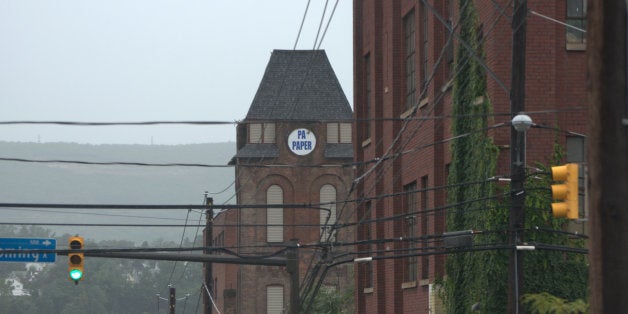
The Audubon Elementary School in Scranton, Pennsylvania is being torn down. Ostensibly, the reason is mold. The school has sat empty for four years, ever since it was discovered in the old building's basement.
But mold is not the sole reason -- nor is the leaky roof, as some have pointed out. This school -- my own elementary alma mater -- will be demolished because Scranton is subject to the demographic forces that are shaping the rest of the U.S. and the world. The population is aging, and elementary schools are on the chopping block.
While conversations about "aging" tend to focus on longevity -- living longer and healthier by a whopping 30 years from the earliest part of the 20th century -- forces of de-population are also at play. It's true in Asia, led by Japan, Korea and Singapore; it's true across Europe, in Germany, Italy and Spain; and it's also true in the emerging markets, with China, Turkey and dozens of others. In each of the countries, and across these regions, we are nearing a population with more old than young. As birthrates fall and life spans increase, the population structure is being turned upside down.
And so there are schools like Audubon, which are the symbols of population aging -- no longer needed as when the bulge of baby boomers in mid-20th century filled them to the brim.
In Scranton, the data tells the story. In the 1950s, the population sat around 125,000. Now, it's down to 75,000. But even more dramatic is the age-distribution: there are nearly as many people in Scranton over-65 as under 18.
But if Scranton is a symbol for de-population, it also has the opportunity to become a symbol for imaginative and progressive approaches to turn population aging into a strength and a lever for economic growth. Indeed, with the right strategic thinking, Scranton could become one of the U.S.'s most important "age-friendly cities" -- and it could harness its age-friendliness as an engine of growth and renewed prosperity.
Such a future for Scranton would be like recapturing the past. Not long ago, Scranton was a darling of the Northeast. Located near New York City, Philadelphia, and Washington, DC, the small town of Scranton was a strategic outpost.
Look at a map, and see how the interstates of the Northeast channel through Scranton. For a small place, it had a huge footprint, and the leaders of the time saw Scranton's economic future tied to the interstate system. For a while, they were right. But now, economic growth isn't about highways -- it's about demographics.
And Scranton needs to "pivot."
If this sounds far-fetched, tell that to the people in the north of England, in Manchester and Newcastle. These cities, once the mighty industrial powers of the north, fell hard in the late 20th century. Like Scranton, they had the economic formula right for the past century, but when things changed, they took it on the chin.
And now -- despite aging populations and a slugging national economy -- Manchester and Newcastle are climbing back on their feet. They're at the cutting-edge of age-friendly development, and they're set on turning their "pensioners" into active, productive citizens. Scranton: It's your turn.
Indeed, for Scranton, the goal and even many of the methods would be the same. Scranton could rest its age-friendly development on two pillars:
- Build out and re-imagine the University of Scranton: For decades, the American university has been a place where twenty-somethings live, play and even do a little learning. This model is falling apart for all sorts of reasons, and the best universities are going to re-imagine not only how they provide education, but also to whom they provide it.
As adults imagine and live out careers that extend for five and six decades, we are going to have to re-think what it means to get an education. Businesses are beginning to get it, and they're offering all sorts of opportunities to workers to stay relevant and up-to-date. Now, the universities need to get on board. Their ability to attract older students and teach relevant skills will become a competitive advantage in the decades ahead.
One can imagine how, if Scranton already had these two developments underway, it could have saved the Audubon elementary school and repurposed it for something else -- perhaps a "dorm" for older adults off-campus and away from the collegiate foolishness; perhaps a shared-workspace for older entrepreneurs. With a little bit of creativity and the right thinking about the possibilities of age-friendly growth and development, the options are nearly endless.
And most are surely better than -- well -- I am prejudiced, but blowing up the symbol of my childhood.
As an alumnus of Audubon elementary, I must admit that I am sad to see it go. But as a native of Scranton, I'm excited to imagine how the city could - like Manchester and Newcastle - arise from the ashes and reestablish itself as a vibrant, 21st century city. What it built a century ago on coal mining, or decades later on interstate transport, it could today on demographics.
